Chrysler 2008 Annual Report Download - page 293
Download and view the complete annual report
Please find page 293 of the 2008 Chrysler annual report below. You can navigate through the pages in the report by either clicking on the pages listed below, or by using the keyword search tool below to find specific information within the annual report.-
 1
1 -
 2
2 -
 3
3 -
 4
4 -
 5
5 -
 6
6 -
 7
7 -
 8
8 -
 9
9 -
 10
10 -
 11
11 -
 12
12 -
 13
13 -
 14
14 -
 15
15 -
 16
16 -
 17
17 -
 18
18 -
 19
19 -
 20
20 -
 21
21 -
 22
22 -
 23
23 -
 24
24 -
 25
25 -
 26
26 -
 27
27 -
 28
28 -
 29
29 -
 30
30 -
 31
31 -
 32
32 -
 33
33 -
 34
34 -
 35
35 -
 36
36 -
 37
37 -
 38
38 -
 39
39 -
 40
40 -
 41
41 -
 42
42 -
 43
43 -
 44
44 -
 45
45 -
 46
46 -
 47
47 -
 48
48 -
 49
49 -
 50
50 -
 51
51 -
 52
52 -
 53
53 -
 54
54 -
 55
55 -
 56
56 -
 57
57 -
 58
58 -
 59
59 -
 60
60 -
 61
61 -
 62
62 -
 63
63 -
 64
64 -
 65
65 -
 66
66 -
 67
67 -
 68
68 -
 69
69 -
 70
70 -
 71
71 -
 72
72 -
 73
73 -
 74
74 -
 75
75 -
 76
76 -
 77
77 -
 78
78 -
 79
79 -
 80
80 -
 81
81 -
 82
82 -
 83
83 -
 84
84 -
 85
85 -
 86
86 -
 87
87 -
 88
88 -
 89
89 -
 90
90 -
 91
91 -
 92
92 -
 93
93 -
 94
94 -
 95
95 -
 96
96 -
 97
97 -
 98
98 -
 99
99 -
 100
100 -
 101
101 -
 102
102 -
 103
103 -
 104
104 -
 105
105 -
 106
106 -
 107
107 -
 108
108 -
 109
109 -
 110
110 -
 111
111 -
 112
112 -
 113
113 -
 114
114 -
 115
115 -
 116
116 -
 117
117 -
 118
118 -
 119
119 -
 120
120 -
 121
121 -
 122
122 -
 123
123 -
 124
124 -
 125
125 -
 126
126 -
 127
127 -
 128
128 -
 129
129 -
 130
130 -
 131
131 -
 132
132 -
 133
133 -
 134
134 -
 135
135 -
 136
136 -
 137
137 -
 138
138 -
 139
139 -
 140
140 -
 141
141 -
 142
142 -
 143
143 -
 144
144 -
 145
145 -
 146
146 -
 147
147 -
 148
148 -
 149
149 -
 150
150 -
 151
151 -
 152
152 -
 153
153 -
 154
154 -
 155
155 -
 156
156 -
 157
157 -
 158
158 -
 159
159 -
 160
160 -
 161
161 -
 162
162 -
 163
163 -
 164
164 -
 165
165 -
 166
166 -
 167
167 -
 168
168 -
 169
169 -
 170
170 -
 171
171 -
 172
172 -
 173
173 -
 174
174 -
 175
175 -
 176
176 -
 177
177 -
 178
178 -
 179
179 -
 180
180 -
 181
181 -
 182
182 -
 183
183 -
 184
184 -
 185
185 -
 186
186 -
 187
187 -
 188
188 -
 189
189 -
 190
190 -
 191
191 -
 192
192 -
 193
193 -
 194
194 -
 195
195 -
 196
196 -
 197
197 -
 198
198 -
 199
199 -
 200
200 -
 201
201 -
 202
202 -
 203
203 -
 204
204 -
 205
205 -
 206
206 -
 207
207 -
 208
208 -
 209
209 -
 210
210 -
 211
211 -
 212
212 -
 213
213 -
 214
214 -
 215
215 -
 216
216 -
 217
217 -
 218
218 -
 219
219 -
 220
220 -
 221
221 -
 222
222 -
 223
223 -
 224
224 -
 225
225 -
 226
226 -
 227
227 -
 228
228 -
 229
229 -
 230
230 -
 231
231 -
 232
232 -
 233
233 -
 234
234 -
 235
235 -
 236
236 -
 237
237 -
 238
238 -
 239
239 -
 240
240 -
 241
241 -
 242
242 -
 243
243 -
 244
244 -
 245
245 -
 246
246 -
 247
247 -
 248
248 -
 249
249 -
 250
250 -
 251
251 -
 252
252 -
 253
253 -
 254
254 -
 255
255 -
 256
256 -
 257
257 -
 258
258 -
 259
259 -
 260
260 -
 261
261 -
 262
262 -
 263
263 -
 264
264 -
 265
265 -
 266
266 -
 267
267 -
 268
268 -
 269
269 -
 270
270 -
 271
271 -
 272
272 -
 273
273 -
 274
274 -
 275
275 -
 276
276 -
 277
277 -
 278
278 -
 279
279 -
 280
280 -
 281
281 -
 282
282 -
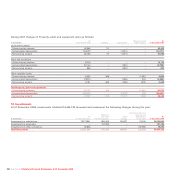 283
283 -
 284
284 -
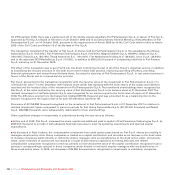 285
285 -
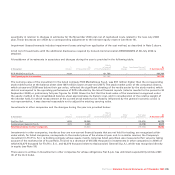 286
286 -
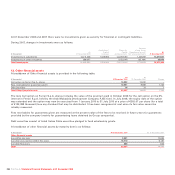 287
287 -
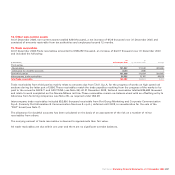 288
288 -
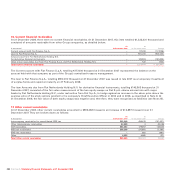 289
289 -
 290
290 -
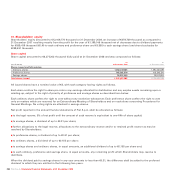 291
291 -
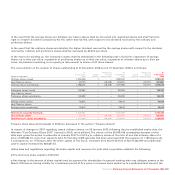 292
292 -
 293
293 -
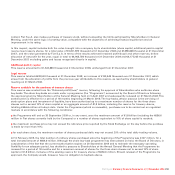 294
294 -
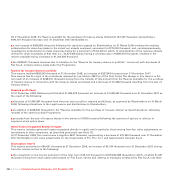 295
295 -
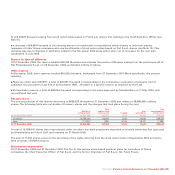 296
296 -
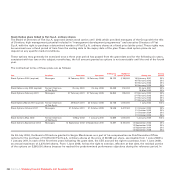 297
297 -
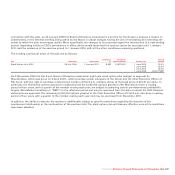 298
298 -
 299
299 -
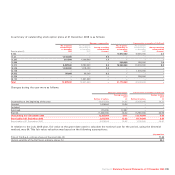 300
300 -
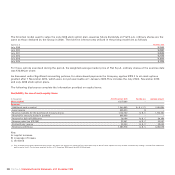 301
301 -
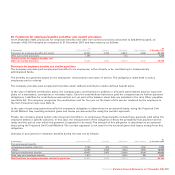 302
302 -
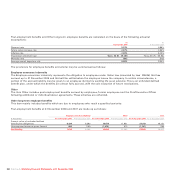 303
303 -
 304
304 -
 305
305 -
 306
306 -
 307
307 -
 308
308 -
 309
309 -
 310
310 -
 311
311 -
 312
312 -
 313
313 -
 314
314 -
 315
315 -
 316
316 -
 317
317 -
 318
318 -
 319
319 -
 320
320 -
 321
321 -
 322
322 -
 323
323 -
 324
324 -
 325
325 -
 326
326 -
 327
327 -
 328
328 -
 329
329 -
 330
330 -
 331
331 -
 332
332 -
 333
333 -
 334
334 -
 335
335 -
 336
336 -
 337
337 -
 338
338 -
 339
339 -
 340
340 -
 341
341 -
 342
342 -
 343
343 -
 344
344 -
 345
345 -
 346
346 -
 347
347 -
 348
348 -
 349
349 -
 350
350 -
 351
351 -
 352
352 -
 353
353 -
 354
354 -
 355
355 -
 356
356
 |
 |
general meeting of shareholders is also required to adopt suitable measures when share capital decreases by more than one third
as the result of ascertained losses and to reduce share capital if by the end of the following year such losses have not fallen to less
than one third. If as the consequence of a loss of more than one third of capital this then drops below the legal minimum,
shareholders in general meeting are required to approve a decrease and simultaneous increase of capital to an amount not less than
this minimum or must change a company’s legal form.
As discussed previously the share in profits due to each class of shares is determined by a company’s By-laws.
An additional paid-in capital reserve is established if a company issues shares at a price exceeding their nominal value. This
reserve may not be distributed until the legal reserve has reached one fifth of share capital.
A company may not purchase treasury stock for an amount exceeding the distributable profits and available reserves stated in its
most recently approved financial statements. Any purchase must be approved by shareholders in general meeting and in no case
may the nominal value of the shares acquired exceed one tenth of share capital.
The following matters are also relevant to the share capital of Fiat S.p.A.:
In a meeting held on 3 November 2006, the Board of Directors of Fiat S.p.A. exercised its delegated powers pursuant to Article
2443 of the Italian Civil Code for a capital increase reserved for employees of the company and/or its subsidiaries up to a
maximum of 1% of that stock, i.e. €50,000,000, by issuance of a maximum of 10,000,000 ordinary shares each of nominal value €5,
corresponding to 0.78% of share capital and 0.92% of ordinary share capital, at a price of €13.37 each, to service the employee
stock option plan described in the following paragraph. The execution of this increase in capital is dependant on the conditions of
the plan being satisfied.
In addition, in respect of dividends, Fiat has had in force since 2006 a policy under which it intends to distribute a total dividend to
its shareholders amounting to 25% of consolidated profits earned up to 2010. However, despite the fact that the Group earned
Consolidated profit of €1,721 million in 2008 and that the net profit of Fiat S.p.A. is such to enable a dividend to be distributed in
conformity with the policy, the Board of Directors will be proposing to shareholders at their Annual General Meeting that the
distribution of dividends should be limited to savings shares alone ( €0.31 per share for a total of €24.8 million, as established by
the Company’s bylaws), with the aim of strengthening the Group’s capital structure and preserving its liquidity.
The objectives identified by Fiat for managing capital are to create value for shareholders as a whole, to safeguard business
continuity and support the growth of the Group. As a result Fiat endeavours to maintain an adequate level of capital that at the
same time enables it to obtain a satisfactory economic return for its shareholders and guarantee economic access to external
sources of funds, including in this by means of achieving an adequate rating.
Fiat constantly monitors the evolution of the ratio between debt and equity and in particular the level of net debt and the
generation of cash from its industrial activities.
In order to reach these objectives Fiat aims at a continuous improvement in the profitability of the business in which it operates.
Further, it may sell part of its assets to reduce the level of its debt, while the Board of Directors may make proposals to
Shareholders in General Meeting to reduce or increase capital stock or, where the law permits, to distribute reserves. In this
Fiat S.p.A. Statutory Financial Statements at 31 December 2008292
